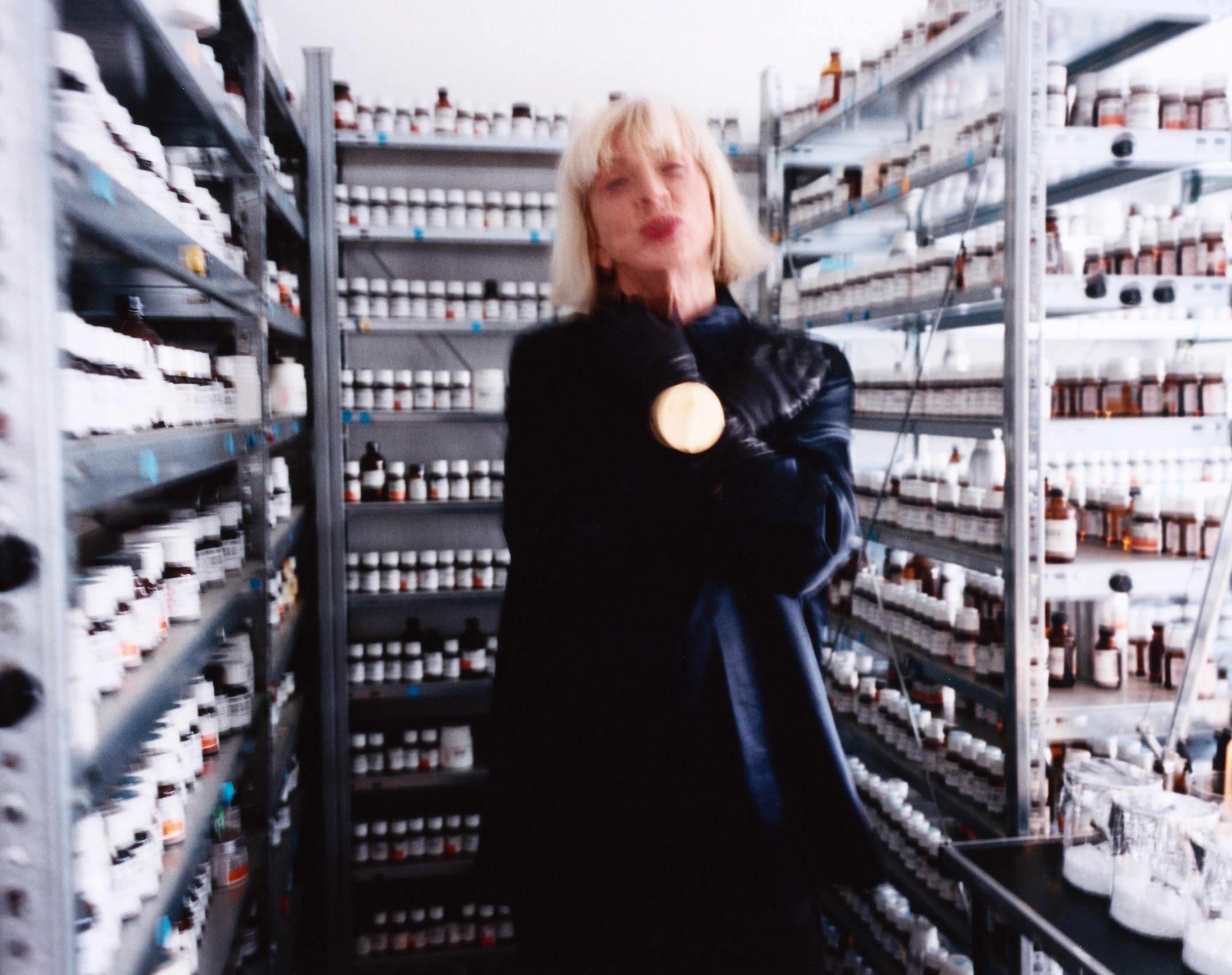
Sissel Tolaas photographed by Lengua for PIN–UP.

Sissel Tolaas photographed by Lengua for PIN–UP.
Sissel Tolaas works with smells. Not scents, not fragrances, not perfumes, but smells. The frequent conflation of these terms stems from the fact that smell is such an under-researched field, requiring the Norwegian artist and forensic chemist to constantly re-assert this distinction. Most of us don’t think very critically about smells, yet they are fundamental to our emotional experience of the world. “We smell before we see the mother,” Tolaas says. “This is scientifically proven.”
In addition to organic chemistry, math, and visual art, Tolaas has a background in linguistics. Foundational to her work — which the public can experience in exhibitions like Sleeping Beauties: Reawakening Fashion at the Metropolitan Museum of Art’s Costume Institute in New York from May to September 2024 — is the relationship between smell and systems of communication. As she started to build an archive, studying and collecting odors that she encountered in the wild, like those of a fish or a sock, she realized that there aren’t many words to process or understand these distinct olfactory phenomena. The language — and lack of language — around the moment of perception is central to her research. She not only synthesizes smells in the lab but she travels around the world recording the nonlinguistic sounds — like “aaah” or “ooooh” — that people make in response to them, and has developed software to analyze her growing database of these reactions. Tolaas believes that tapping into these responses has the potential to create a more engaged global citizenry: “Without emotional reaction, there is no action.”

Sissel Tolaas photographed by Lengua for PIN–UP.

Sissel Tolaas photographed by Lengua for PIN–UP.
— Sissel Tolaas
Tolaas’s database, now comprising over 15,000 smells she’s recorded and reproduced, is housed in the artist’s chemistry lab, RE_searchLab, which she founded in Berlin in 2002. As a forensic chemist, Tolaas collects molecular samples to study a particular subject, whether it’s an archeological investigation of the ancient ruins of Pompeii (a project she’s currently working on with the Nicoletta Fiorucci Foundation, the Ministero della Cultura, and the Pompeii Archaeological Park) or a garment in the Met Costume Institute’s archive. She determines what smell molecules are present, many of which are indicative of past environmental conditions. In the case of the Met exhibition, she explains, “I will analyze the dresses for hours and record molecules. Then these recordings are analyzed corresponding to my database,” says Tolaas. “You have a picture and you break it up into pixels. This is similar to what I do.”
While she’s dedicated herself to the study of smell since 1990, Tolaas’s work has suddenly become very popular. “The topic of smell had been completely neglected in intellectual discourse,” she says, but “with Covid, suddenly the rhetoric changed.” With this shift, Tolaas finds herself part of many different storytelling projects. When we talked, she’d recently returned from the opening of Bahrain Pearling Path, a UNESCO World Heritage site in Bahrain dedicated to the history of pearl diving. “The project had been going on for twelve years. I’ve been involved over the last four years — Formafantasma brought me on board to fill in some gaps and help with other types of storytelling.” For this project, Tolaas studies the smell molecules of garments in the archive, Cristóbal’s personal items, and even the walls of the brand’s historic couture house in Paris, using this research to forge yet new smells for haute couture shows.

Sissel Tolaas’s Berlin-based chemistry lab, RE_searchLab, houses an estimated 15,000 smells collected over 22 years. Sissel Tolaas photographed in her lab by Lengua for PIN–UP.
— Sissel Tolaas

Sissel Tolaas photographed by Lengua for PIN–UP.
In her exhibitions, there is always an architectural component to how Tolaas presents smells. In Bahrain, for example, she hacked the building’s air conditioning system to circulate smells throughout the space. Her 2021 exhibition at the Astrup Fearnley Museum in Oslo was designed to facilitate the experience of various odors by gallery goers in different ways — through wired smell emitters, fans, soaps, and even a mylar-coated wall segment purposely positioned low to the ground so visitors had to get down on their hands and knees like a dog to experience it. For the Metropolitan Museum show, curated by Andrew Bolton with exhibition design by Leong Leong, Tolaas is employing an air-tubing system to present the smells. “Molecules are the alphabet of the air, and I write with the air tubes,” she says.
Tolaas emphasizes that joy and playfulness are important aspects of our emotional experience of smells. “I literally learned from children and then tried to apply it to grown-ups,” she says, adding, “To smell the world is fun. People laugh when somebody’s farting.”

Sissel Tolaas’s lab photographed by Lengua for PIN–UP.

Sissel Tolaas’s lab photographed by Lengua for PIN–UP.